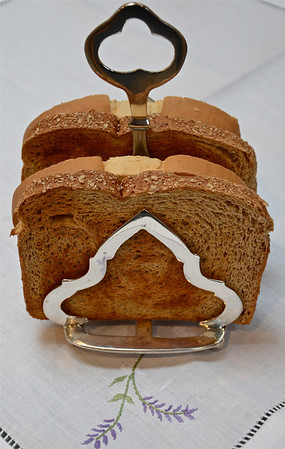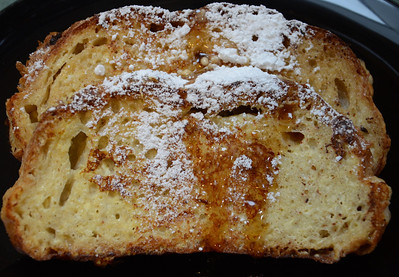
At dinner last night with friends someone asked what my favorite thing to cook was. The group roared when I answered, quite sincerely, “Toast.” For years I’ve started my day with a crisp piece of whole grain toast slathered with organic Yum peanut butter and mixed berry preserves. It may be mindlessly easy but it’s also wholesome, filling, tasty and my lifelong comfort food. Sophia Loren may have pasta to thank for her physique but, me, I owe it all to toast.
Toast has been around for centuries. Cooked over open fires, it was the perfect ancient antidote for stale bread. Want to mask the toughness and dryness of old bread? Just make it hot, golden and crunchy — make it toast.
In the Middle Ages it played an important mealtime role, sopping up meat drippings, gravies, stews and the like. Bread would disintegrate in these liquids but toast held its shape and absorbed the rich mixtures.
By the late Middle Ages cooks figured out that toast provided an edible surface on which foods could be served. Poached eggs, chopped meats, fish, cheese and baked beans all started appearing on top of toast. So, too, did honey as well as cinnamon sugar, which was moistened with sweet wine.

Around this time the wonderful toast dish pain perdu began appearing on French tables. The literal translation of this is “lost bread” but, since childhood, I’ve referred to egg-coated, pan-fried and sugar-dusted bread as French toast.
While the French received credit for this delicacy, other countries did have their own versions. In Spain folks ate torrijas, thick slices of toast drenched in honey, while in Portugal they consumed rabanadas. The 17th century English take on French toast was known as poor knights. Here the bread was fried alongside the egg coating and then decorated with butter, sugar and rose water.
Similar to my preference for toast with PB and preserves, my interpretation of French toast tends to be rather traditional. I dunk my bread in a mixture of milk, egg, vanilla, nutmeg, cinnamon and sugar and then pan-fry it. However, when I’m looking for an exceptional French toast dish, I haul out my copy of The Joy of Cooking (Simon and Schuster, 1997) and make this.
OVERNIGHT BAKED FRENCH TOAST
Adapted from The Joy of Cooking by Rombauer, Rombauer Becker and Becker
Serves 4
1 cup skim milk
6 large eggs
1/4 cup maple syrup plus extra for serving
2 tablespoons firmly packed light brown sugar
1 teaspoon vanilla
1 teaspoon ground cinnamon
1/4 teaspoon nutmeg
8 slices white or wheat bread, crusts removed
1/2 cup raspberries, for serving
1 to 2 tablespoons confectioner’s sugar, for serving
In an 8″ x 8″ baking dish whisk together the milk, eggs, 1/4 cup maple syrup, sugar, vanilla, cinnamon and nutmeg. Dip each slice of bread into the egg mixture, coating both sides, and then place the bread in the dish, making two compact layers.
Once all the bread has been packed into the dish, cover it with plastic wrap and refrigerate overnight.
When you’re ready to bake the French toast, preheat the oven to 400 degrees Fahrenheit. Butter a large, shallow baking pan.
Remove the slices from egg mixture and lay them in the greased baking pan. Bake, turning the bread over once, until puffy and golden in color, 12 to 15 minutes. Remove, dust the top of the French toast with raspberries and confectioner’s sugar and then pour maple syrup, to taste, over top. Serve immediately.